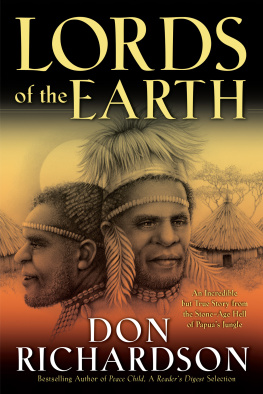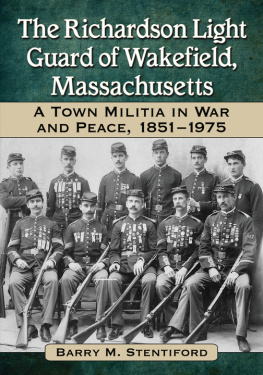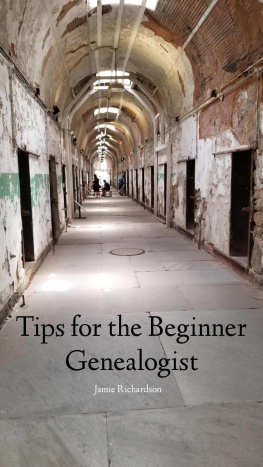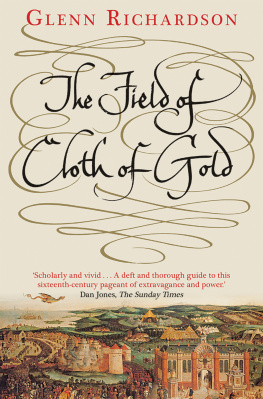Don Richardson - Peace Child
Here you can read online Don Richardson - Peace Child full text of the book (entire story) in english for free. Download pdf and epub, get meaning, cover and reviews about this ebook. year: 2005, publisher: Baker Publishing Group, genre: Detective and thriller. Description of the work, (preface) as well as reviews are available. Best literature library LitArk.com created for fans of good reading and offers a wide selection of genres:
Romance novel
Science fiction
Adventure
Detective
Science
History
Home and family
Prose
Art
Politics
Computer
Non-fiction
Religion
Business
Children
Humor
Choose a favorite category and find really read worthwhile books. Enjoy immersion in the world of imagination, feel the emotions of the characters or learn something new for yourself, make an fascinating discovery.

- Book:Peace Child
- Author:
- Publisher:Baker Publishing Group
- Genre:
- Year:2005
- Rating:3 / 5
- Favourites:Add to favourites
- Your mark:
- 60
- 1
- 2
- 3
- 4
- 5
Peace Child: summary, description and annotation
We offer to read an annotation, description, summary or preface (depends on what the author of the book "Peace Child" wrote himself). If you haven't found the necessary information about the book — write in the comments, we will try to find it.
Peace Child — read online for free the complete book (whole text) full work
Below is the text of the book, divided by pages. System saving the place of the last page read, allows you to conveniently read the book "Peace Child" online for free, without having to search again every time where you left off. Put a bookmark, and you can go to the page where you finished reading at any time.
Font size:
Interval:
Bookmark:

Readers interested in assisting World Teams international work force in their spiritual, medical and educational labors in developing countries should contact:
World Team | |
1431 Stuckert Rd. | P.O. Box 217, Ringwood East |
Warrington, PA 18976 | Victoria, 3135 |
U.S.A. | Australia |
7570 Danbro Cr. | www.worldteam.org |
Mississauga, ON L5N 6P9 | |
Canada |
2005 Don Richardson
Published by Bethany House Publishers
11400 Hampshire Avenue South
Bloomington, Minnesota 55438
www.bethanyhouse.com
Bethany House Publishers is a division of
Baker Publishing Group, Grand Rapids, Michigan.
www.bakerpublishinggroup.com
Bethany House Publishers edition published 2014
ISBN 978-1-4412-6696-5
Previously published by Regal Books
Ebook edition originally created 2013
All rights reserved. No part of this publication may be reproduced, stored in a retrieval system, or transmitted in any form or by any meansfor example, electronic, photocopy, recordingwithout the prior written permission of the publisher. The only exception is brief quotations in printed reviews.
Library of Congress Cataloging-in-Publication Data is on file at the Library of Congress, Washington, DC.
Photos on pages 236 and 238 by Don Richardson.
Other photos by Fred Roberts.
DEDICATION
To the men, women and children
who prayed and shared their earthly substance
that the Sawi might hear
we gratefully dedicate these pages.
Also by Don Richardson
Lords of the Earth
Eternity in Their Hearts
Peace Child is also published in these languages:
Chinese | Italian |
Dutch | Norwegian |
Finnish | Portuguese |
French | Russian |
German | Spanish |
Indonesian | Swedish |
My special thanks to Dr. Myron Bromley,
noted linguist and translations consultant
for the United Bible Society;
to Rev. George Lazenby,
author and mission leader;
for their helpful criticism
of this manuscript.
My gratitude also to my wife, Carol,
for the many hours she spent
typing this manuscript.

The Sawi people of the former Netherlands New Guinea are one of an estimated four hundred tribes in the western half of New Guinea now called West Irian or Irian Jaya. Each of these tribes is distinct and unique, a little cosmos to itself with its own world view, its own set of legends, its own sense of humor.
In 1962, Carol and I went to live among the Sawi. As we studied their language and probed into their legends and customs, we found that we were living and working among a people who honor treachery as an ideal. In many of the legends that the Sawi people tell to their children around the campfires, the heroes are men who formed friendships with the express purpose of later betraying the befriended one to be killed and eaten. The Sawi expression for this practice is to fatten with friendship for the slaughter.
In recognizing that the idealization of treachery was a part of the Sawi view of life, we understood why we felt a certain culture shock in living among them. Yet we had been sent there by God to win them, to overcome within a few short years this idealization of treachery which had been part of their way of life over centuries, possibly millenniums, of time.
The key God gave us to the heart of the Sawi people was the principle of redemptive analogythe application to local custom of spiritual truth. The principle we discerned was that God had already provided for the evangelization of these people by means of redemptive analogies in their own culture. These analogies were our stepping-stones, the secret entryway by which the gospel came into the Sawi culture and started both a spiritual and a social revolution from within.
As Carol and I ministered to the Sawi by means of the peace child and other redemptive analogies, we watched in suspense to see if the Spirit of God would actually use this means of communication for the regeneration of these cannibalistic, head-hunting people. He did!
In an age when all of mankind is rapidly becoming interdependent within a single global community, cross-cultural communication unavoidably becomes one of mans highest priorities.Peace Child chronicles the agonyand the triumphof our attempt to probe one of the worlds most violent cultures to its foundations and then to communicate meaningfully with members of that culture.
The result, we believe, is an adventure in human understanding which will infuse the reader with an even greater and more compassionate regard for the earths endangered minority peoples.

RBMU, Sentani, Irian Jaya
Indonesia




AS THE SUN ROSE, YAE GAZED DOWN THROUGH THE FLOOR SLATS OF HIS MAURO VILLAGE TREEHOUSE AT THE DARK SURFACE OF THE KRONKEL RIVER FORTY FEET BELOW. His calm, black eyes studied the slow drift of leaves on the waveless surface. The leaves were drifting downstream, but at a decreasing rate, evidence that the rising tide of the Arafura Sea, twenty-five miles to the west, was beginning to stay the seaward crawl of the Kronkel.
Soon the tide would reverse the rivers current completely. For a few hours it would force the black, algae-stained Kronkel back into the immense womb of the south New Guinea swamp which had spawned it. Yae had been waiting for this moment to begin his journey upstream, aided by the current.
Yaes wife, Kautap, sat cross-legged by the central cooking place inside the treehouse. Her youngest child, still unnamed, lay asleep on her lap, cradled in the tresses of her heavy grass skirt. Leaning over the baby, Kautap sprinkled water from a bamboo cruse into the white sago flour scattered on the bark pallet before her. Slowly she kneaded the flour and water into a paste, while smoke from the smoldering fire bothered her eyes.
Her older offspring, two-year-old Miri, was playing contentedly beside her on a woven mat. His only toy was a human skull whose sad eyeholes gaped vacuously at the smoke-blackened ceiling as it rolled about. Already polished to a bright ocher sheen by years of fond handling, the skull was kept as a memento of Yaes long-dead father, and also as a fetish to ward off evil spirits. But to little Miri it was only a shiny toy.
Next pageFont size:
Interval:
Bookmark:
Similar books «Peace Child»
Look at similar books to Peace Child. We have selected literature similar in name and meaning in the hope of providing readers with more options to find new, interesting, not yet read works.
Discussion, reviews of the book Peace Child and just readers' own opinions. Leave your comments, write what you think about the work, its meaning or the main characters. Specify what exactly you liked and what you didn't like, and why you think so.








